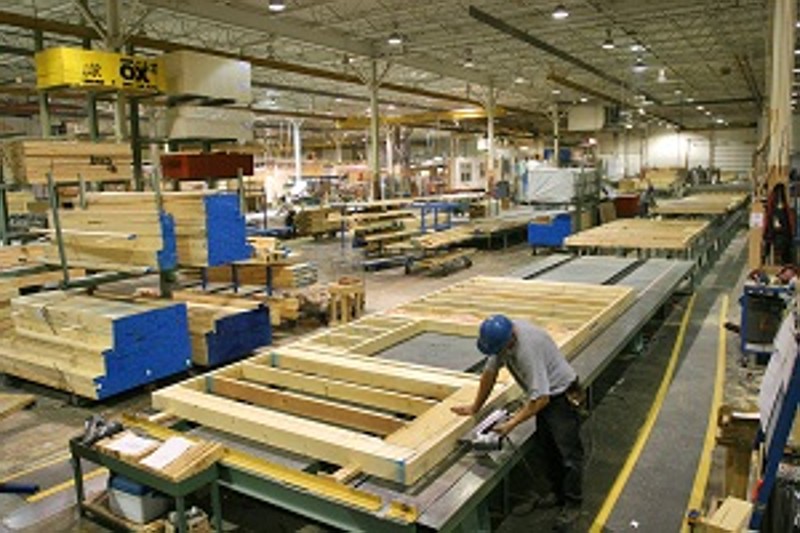If you are considering a new home purchase and plan to utilize the many options available for prefabricated homes, you might hear the terms modular, manufactured and manufactured panel homes. While often these terms are used interchangeably, they actually mean very different things to the home buyer. Understanding the differences in characteristics, building techniques, design options, resale values, land restrictions and financing will help you make the best possible decision for your new home.
First let’s learn a little more about each of these home options.
Modular Homes
Modular homes are built in a factory in sections, or modules. These modules are then transported to the construction site to be assembled by licensed contractors. These homes are placed on permanent foundations and have the same lot/land requirements as ground-up, “stick-built” homes do. Modular homes must still conform to local building codes and require local inspections, just as traditional ground-up homes do. Most housing developments allow for modular homes, although some do not so it’s important to check the CC&Rs (Covenants, Conditions and Restrictions) before purchasing the land.
The home is delivered in sections; this means that modern modular homes allow the home builder to customize the home to the specifications and needs of the new homeowner. Garages, porches and other additions can be added on-site and because the majority of the home is sent in pre-built modules, these homes can be built at a much lower cost that ground-up custom homes.
Manufactured Homes
Manufactured homes are built and assembled in the factory. Often referred to single or double-wide mobile homes, manufactured homes are transported fully built to the site and placed on a crawl space, concrete slab and at times left on wheels. Manufactured homes are constructed on steel frames, and in the case of a double-wide design, the home is bolted together at its seams. Unlike modular homes, a manufactured home does not need to meet local building codes; they must conform to the Federal HUD code instead. Local building inspectors will only verify any work done locally, such as electrical or gas hook-up.
Manufactured homes generally cannot be customized and tend to lose value more quickly than other homes. These homes have common floor plans and many communities do not allow these homes to be placed on lots as permanent structures.
Manufactured Panel Homes
Manufactured panel homes, or panelized homes for short, are really a hybrid of the traditional ground-up, stick-built homes and manufactured homes. Panelized homes have panels which are fabricated in factories to be assembled on-site. Because these panels can be cut in any dimension needed, these homes provide more customization options than module homes do. High ceilings and huge picture windows can be easily created when fabricating the panels and framing and then shipped to the location for assembly.
Manufactured panel homes offer the homeowner some great benefits. Not only are you assured of uniform quality throughout the home, but these panels allow for quicker construction time on-site, saving money as well as time.
Lending Considerations
Financing a modular or manufactured panel home is treated differently from the standard manufactured mobile home. Many lenders will not lend on mobile homes at all due to the transient nature of the home which could allow a homeowner to actually default on the loan and move the home out of reach of the lender.
A modular or manufactured panel home is treated as a ground-up, stick home. Typically the home buyer will obtain a construction loan to pay for the materials and assembly. These construction-to-permanent loans have two stages: the construction period and the permanent mortgage.
Construction Loan Steps
- Approval – Loan approval will be similar to the process for a traditional new or resale home loan but will also include details about the project itself. The borrower will show the lender the building plans, blueprints and a deed or letter of intent for the land.
- Disbursement Schedule – Once final loan approval has been secured, the borrower will establish a disbursement timeline. Some funds will need to be provided to the modular or panel manufacturer as well as advances to the general contractor. At each milestone, the borrower must show proof of completion to the lender in order to release the funds; typically this is done through an on-site inspection which verifies the work itself as well as the quality of construction. Once the timeline has been approved then the borrower will close on the loan.
- Build the Home – During the construction time period, the borrower will make loan payments; normally these are interest-only payments in which the principal will not change. Because this is only a cost to the borrower, it’s important to complete the construction process as soon as possible.
- Permanent Mortgage – Once the construction has been completed, the lender will inspect the final project and appraise the new home. Once they are satisfied with the work and quality, the construction loan will convert into a permanent mortgage. At this point the loan will function as any other home loan. If the loan is a standard 30-year mortgage, then the loan amount will be amortized over that period with each payment including both principal and interest.
Choosing the Right Option
- Modular Homes
A modular home offers the buyer the ability to reduce construction costs over ground-up, stick construction while still allowing flexibility of design. Buyers can use traditional construction loans to finance the building.
- Manufactured Homes
Also known as mobile homes, manufactured homes offer the lowest cost for a new home although structured financing can be difficult to obtain. Actual construction costs are lower because the home is delivered fully built at the factory and then delivered. As a result, the buyer can see the quality of the finished product before purchasing.
- Manufactured Panel Homes
Manufactured panel homes offer the greatest ability to customize the floorplan to the buyer’s needs. Panels are created based on the specific design, including the freedom to create such design features as high ceilings, extra windows and other unique elements. These highly customized homes are still significantly less to build than more traditional ground-up, stick construction projects.
















